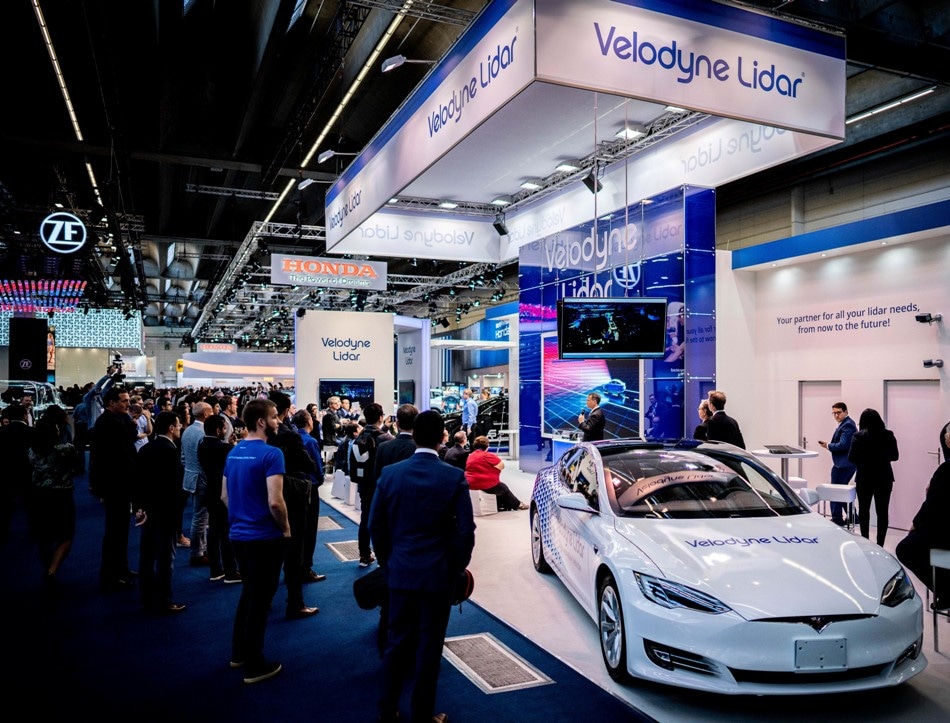Velodyne Lidar, Inc. (Hall 8.0, Booth A13) is showcasing the pristine integration of Velarray lidar sensors into consumer vehicles to make currently available, high-end electric vehicles safer at the IAA 2019 Conference. Velodyne has addressed the market need for lidar technology that enables high-level Advanced Driver Assistance Systems (ADAS) for safe navigation and collision avoidance, all within a compact form factor. The lidar is situated behind the vehicle’s windshield for streamlined, flawless integration.

Velodyne booth visitors can see how the Velodyne Velarray™ sensors are beautifully integrated into sleek, high-end vehicles, maintaining their aerodynamic design. The Velarray’s small, embeddable form factor is a powerful solution to greatly improve automated safety.
“Attendees have been excited to experience the Velarray demonstrations at our booth at the IAA. They have noted how the sensors seem invisible within these vehicles on display, and how greater safety can be achieved on the roadway by using our sensors. Automakers can greatly improve the effectiveness and efficiency of driver-assist features by employing Velarray as a key perception component,” said Marta Hall, President and Chief Business Development Officer, Velodyne Lidar. “Velarray’s lidar technology is inherently superior to cameras and radar in performance requirements that are crucial for avoiding forward-facing collisions and dangerous situations, including when drivers are cut off from the side. With the Velarray, lidar-enabled ADAS is happening now.”
The Velarray provides high-definition, three-dimensional information, providing cars with a more detailed view of their surroundings to maximize roadway safety. The Velarray will allow automakers to create superior ADAS, addressing edge-cases for current approaches, including curvy roads, potholes, intersections, on/off ramps, residential areas and roadways with unclear lane markings. This sensor also performs at night, enabling the detection of pedestrians, bicyclists and motorcyclists, while cameras today struggle in darkness.
The Velarray boasts best-in-class range and resolution that allow for faster object identification and longer braking distance at highway speeds. It detects areas with a horizontal angle of 120 degrees, a vertical angle of approximately 35 degrees and a range of up to 200 meters. With its modern automotive design, the sensor enables both fully autonomous driving as well as ADAS.